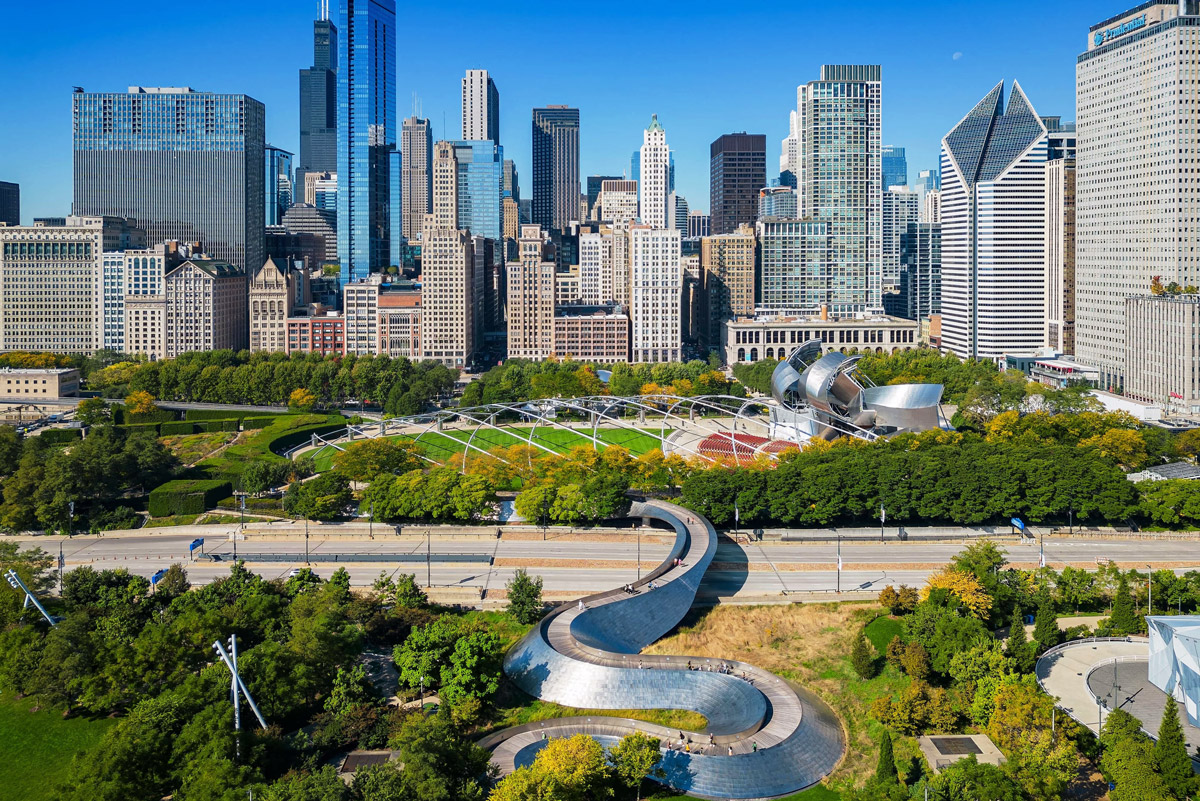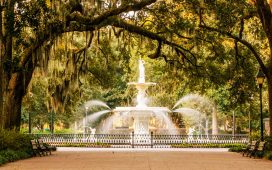Chicago is a city that seems to unfold in layers—the more you explore, the more it reveals. On my recent trip, I discovered just how much this city has to offer: from its world-famous architecture and museums to unforgettable meals and iconic landmarks.
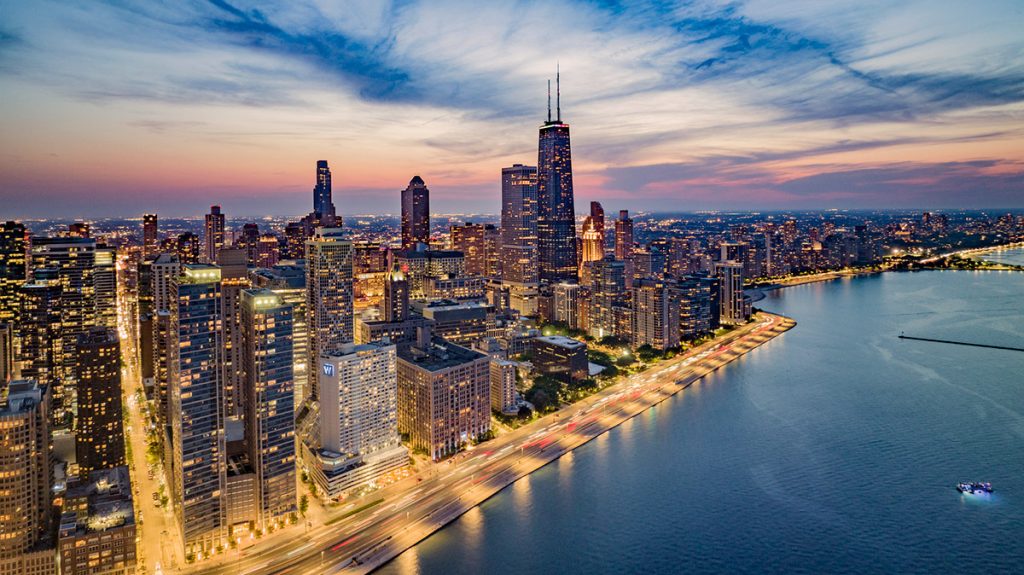
History of Chicago
Chicago’s story is one of resilience and reinvention. Originally inhabited by Native American tribes and later settled by French traders, it became a bustling city in the 19th century thanks to its strategic location on the Great Lakes. The Great Fire of 1871 nearly destroyed it, but Chicago rebuilt with bold ambition, pioneering modern architecture and hosting the 1893 World’s Columbian Exposition. Waves of immigrants added to its cultural fabric, and industries from steel to stockyards made it a powerhouse. Today, Chicago’s history lives on in its skyline, neighborhoods, and museums, where the city’s grit and creativity continue to shine.
Walking Along the River and Exploring the Architecture
Walking along the Chicago Riverwalk was the perfect way to start the trip. The city’s architecture is nothing short of breathtaking, with each building telling a story of its era.
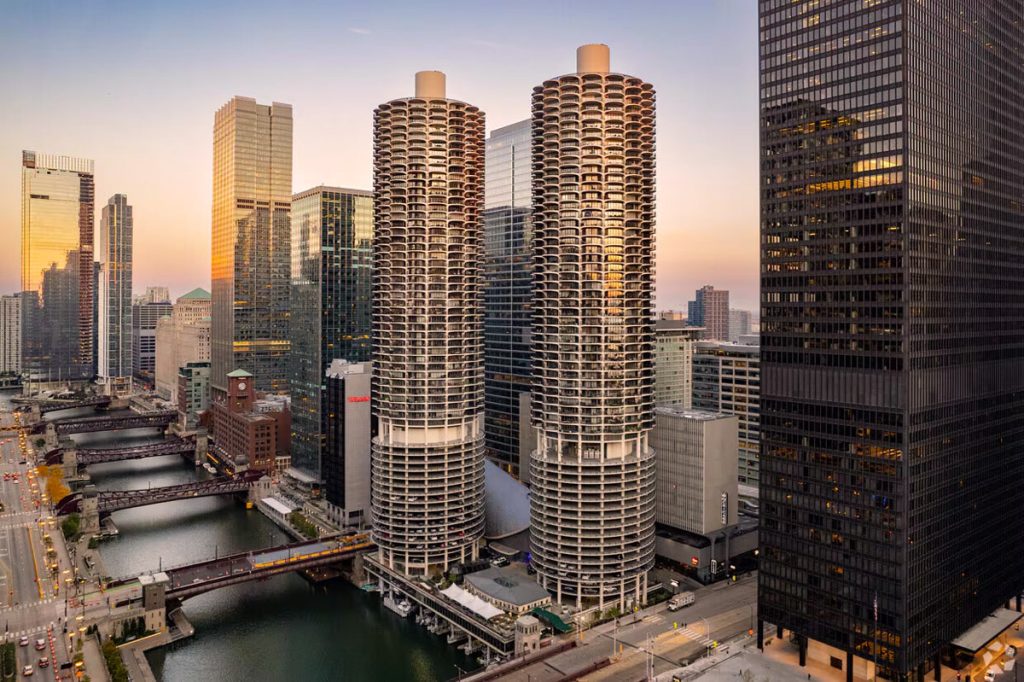
Some highlights along the way included:
- Marina City – the iconic “corn cob” towers designed by Bertrand Goldberg in the 1960s, rising right from the riverfront.
- The Wrigley Building – a gleaming white terra-cotta landmark completed in the 1920s, one of the city’s most photographed sites.
- Tribune Tower – a neo-Gothic masterpiece whose exterior actually includes fragments from famous landmarks around the world, including the Great Wall of China and the Parthenon.
- Willis Tower (formerly Sears Tower) – towering above everything else, it remains one of the tallest buildings in the Western Hemisphere.
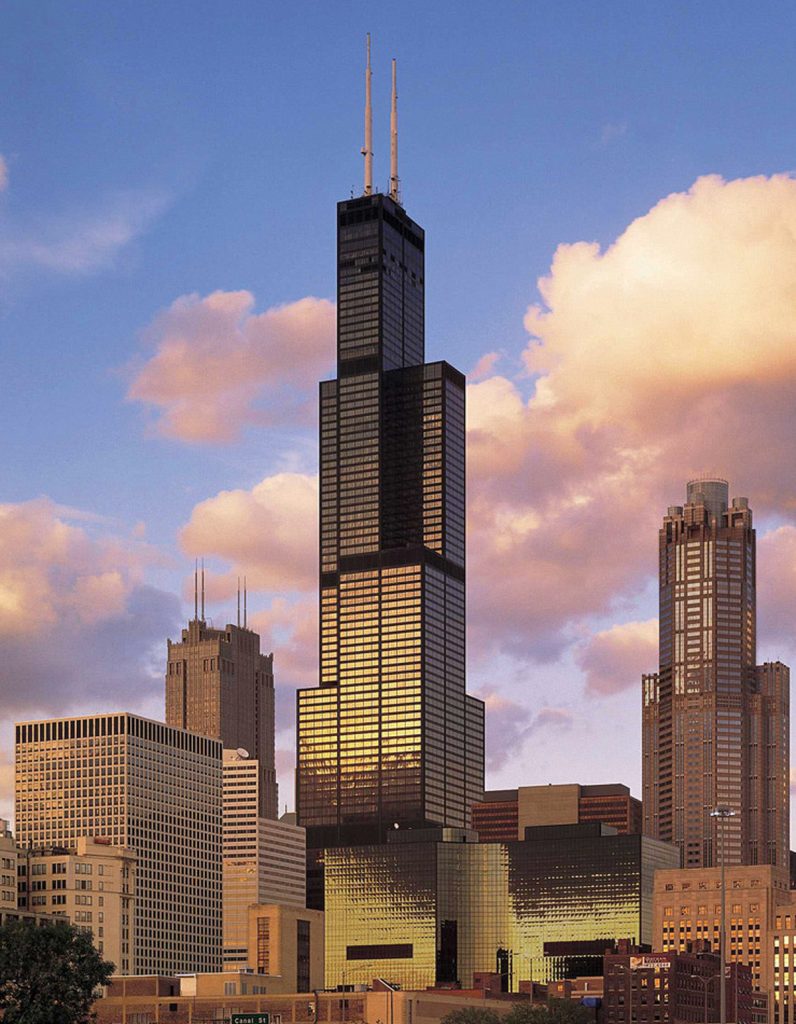
From the Riverwalk, I also noticed the city’s mix of old and new: sleek modern glass towers standing right next to historic structures that have been carefully preserved. It felt like walking through a timeline of architectural ambition.
The Field Museum: Dinosaurs, Cultures, and the Natural World

The Field Museum of Natural History was one of the most memorable parts of the trip. It’s a place where science, history, and storytelling come together.
The museum’s crown jewel is “Sue,” the most complete T. rex fossil ever discovered, standing proudly in Stanley Field Hall. Beyond Sue, I explored:
- Evolving Planet – a journey through 4 billion years of life on Earth, filled with fossils and interactive displays.
- Ancient Egypt – with reconstructed tombs, hieroglyphs, and even real mummies.
- Cultural Halls – which showcase artifacts and traditions from Indigenous peoples, Asia, Africa, and the Pacific.
The museum’s scale and depth made it easy to spend hours wandering, and yet I still felt like I only scratched the surface.
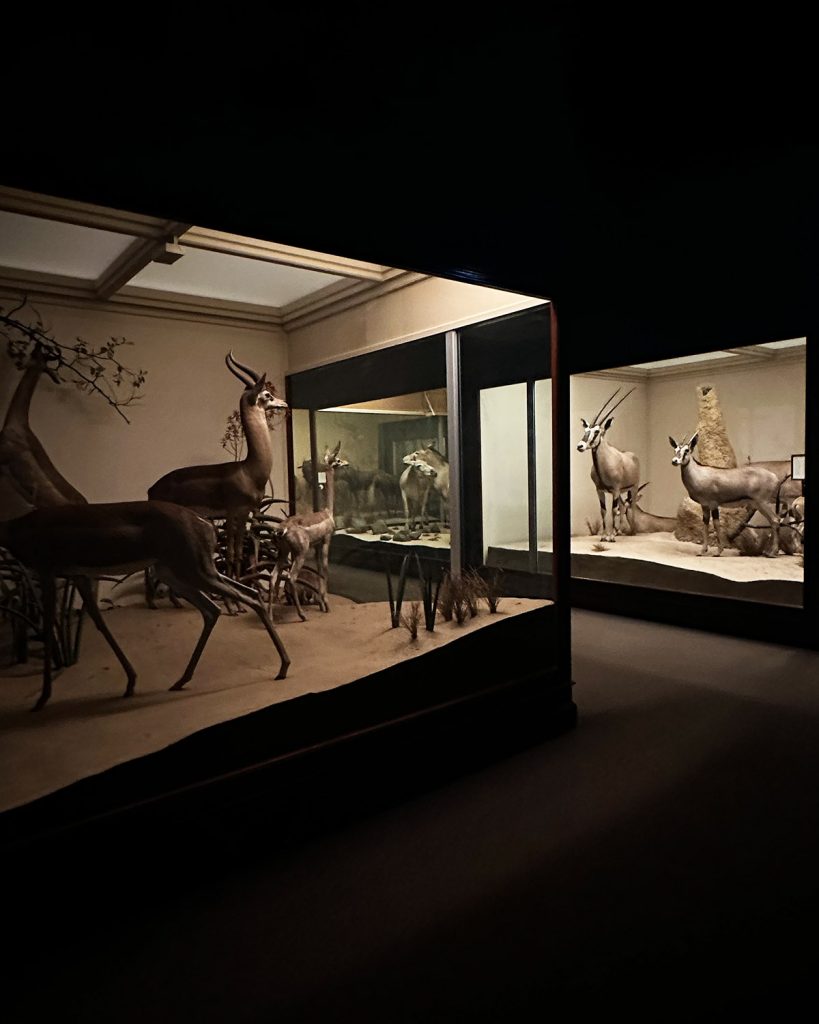
The Animal Exhibits
One of the most impressive parts of the museum was its collection of animal exhibits, which transport you to different corners of the globe.
- The Lions of Tsavo: Probably the most famous animals in the museum, these two man-eating lions terrorized railway workers in Kenya in the 1890s. Their story inspired books and films (including The Ghost and the Darkness), and standing in front of them felt chilling and fascinating at the same time.
- Africa Hall: Full of lifelike dioramas, this exhibit lets you stand face-to-face with elephants, zebras, giraffes, and predators like lions and cheetahs. The attention to detail made it feel like stepping into the savannah.
- Birds of the World: This collection showcases species from every continent, from brilliantly colored tropical birds to powerful raptors. It’s a reminder of how diverse and beautiful avian life is.
- Mammals of Asia and North America: These halls are filled with scenes of bears, bison, tigers, and other animals in their natural habitats. The dioramas are so detailed that you almost forget you’re indoors.
What struck me most was how immersive these exhibits are. Instead of just looking at preserved animals, you feel like you’re peering into a living snapshot of nature. It’s both educational and awe-inspiring, especially for anyone who loves wildlife.
Dining Through the City
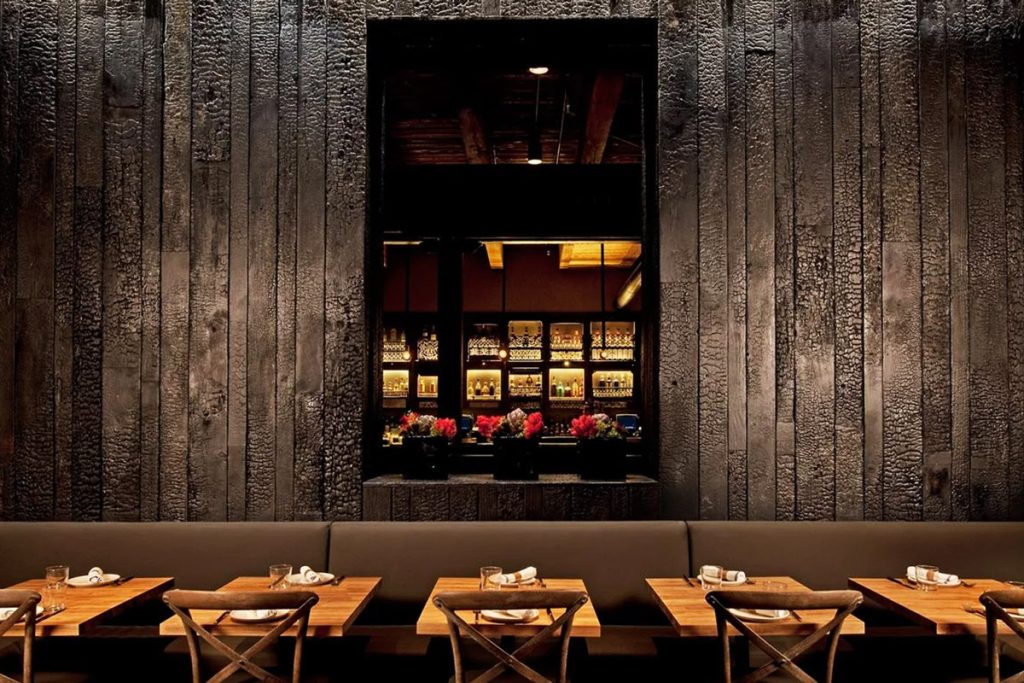
Chicago’s food scene is as legendary as its skyline. The city thrives on bold flavors, hearty classics, and innovative chefs who keep pushing the boundaries. On my trip, I made it a point to sample some of the city’s best-known spots across different styles of dining.
- Girl & the Goat – Helmed by celebrity chef Stephanie Izard, this trendy restaurant in the West Loop is famous for its inventive small plates. From wood-fired meats to globally inspired vegetable dishes, everything is designed to be shared. The bold flavors and lively vibe make it one of the city’s most popular dining destinations.
- Gibsons Bar & Steakhouse – A Chicago institution in the Gold Coast neighborhood, Gibsons is where you go for a true American steakhouse experience. Massive cuts of prime beef, a lively old-school atmosphere, and impeccable service make it a must. It’s a place that captures Chicago’s big personality in both food and setting.
- Alinea – For a completely different dining experience, Alinea offers Michelin-starred molecular gastronomy that is as much performance as it is food. Each dish feels like a piece of art, with creative presentations and unexpected flavors. It’s one of the world’s most acclaimed restaurants and worth a splurge if you want something extraordinary.
- Frontera Grill – Chef Rick Bayless’s flagship restaurant brings gourmet Mexican cuisine to Chicago with authentic flavors and creative twists. From mole dishes to fresh ceviche, Frontera Grill elevates Mexican cooking while staying true to its roots. It’s vibrant, flavorful, and consistently acclaimed.
- Au Cheval – Often hailed as serving the best burger in America, Au Cheval is a casual yet cult-favorite spot. Their double cheeseburger (with perfectly melted cheese, thick-cut bacon, and a signature dijonnaise) is legendary, drawing both locals and travelers who are willing to wait in line for a taste.
- Lou Malnati’s – You can’t visit Chicago without indulging in deep-dish pizza, and Lou Malnati’s is one of the best places to do it. Their buttery crust, rich tomato sauce, and gooey cheese create a pie that’s indulgent and unforgettable. It’s a slice of pure Chicago tradition.

Spotlight: Wrigley Field, A Home Run for Sports History
Even if you’re not a die-hard baseball fan, Wrigley Field is worth the visit. Opened in 1914, it’s one of the oldest ballparks in Major League Baseball and home to the beloved Chicago Cubs.
Walking into Wrigley, I felt the charm of its old-school atmosphere—the famous red marquee at the entrance, the ivy-covered outfield walls, and the neighborhood vibe of Wrigleyville surrounding it. If you can catch a game, it’s a one-of-a-kind experience, with fans who are as passionate as they are welcoming. Even on non-game days, Wrigley is a landmark that embodies Chicago’s spirit of tradition and community.
Meeting “The Bean”
No trip to Chicago is complete without seeing Cloud Gate, better known as The Bean. Designed by British-Indian artist Anish Kapoor and unveiled in 2004, it quickly became one of the most recognized public artworks in the world.
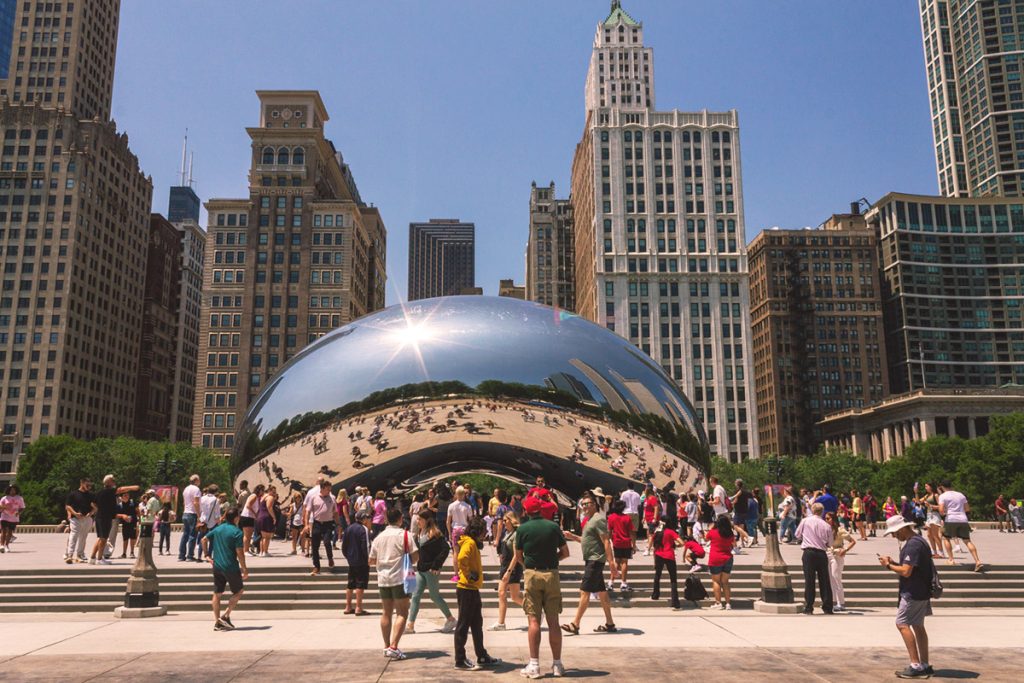
The Design and Meaning
Cloud Gate is made of 168 stainless steel plates welded seamlessly together, polished to such a high degree that you can’t see the seams. It weighs over 100 tons and stands 33 feet high, stretching 66 feet long. Its form was inspired by liquid mercury, giving it that smooth, flowing, otherworldly appearance. Kapoor envisioned the sculpture as a “gate to the city,” reflecting both the sky and the skyline.
The nickname The Bean came from its kidney-like shape, though Kapoor himself was never fond of the name. Still, it stuck — and now it’s affectionately embraced by Chicagoans and visitors alike.
The Experience
Standing before it, you’re immediately drawn into interaction. During my visit, I noticed people circling around it, taking selfies, even lying down beneath it. Walking underneath the central arch — often called the “omphalos” or navel — the reflections twist and warp, creating an almost psychedelic effect where the world folds in on itself.
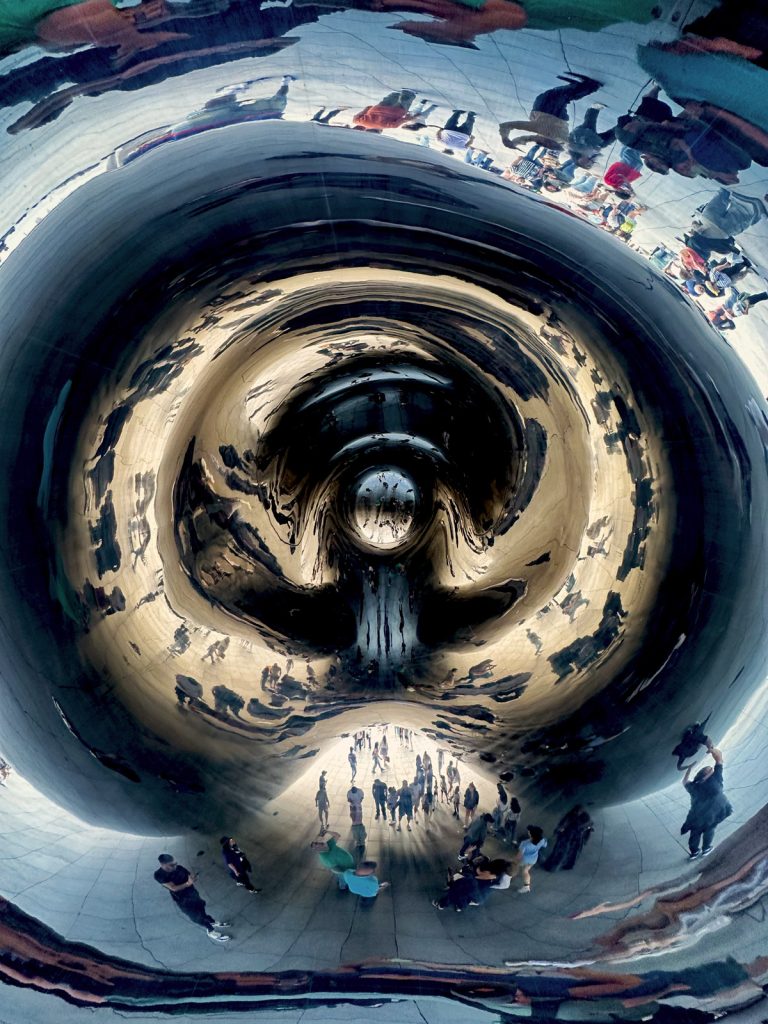
From the outside, the mirrored surface captures the Chicago skyline, Millennium Park, and the ever-changing Midwestern sky. On a sunny day, the reflections are crisp and dazzling; at night, the lights of the city ripple across its surface like a painting in motion. In winter, it gleams against the snow; in summer, it shimmers under the sun.
Why It’s Special
What struck me most is how democratic the artwork is — it belongs to everyone. Unlike many works of art that are kept behind glass or in galleries, The Bean invites touch, play, and reflection (literally). It’s become a cultural hub where strangers mingle, families pose, and visitors from all over the world share in a collective moment of wonder.
It’s rare for modern public art to become so beloved so quickly, but Cloud Gate has truly become the symbol of Chicago — as recognizable as the skyline itself.
Spotlight: Jay Pritzker Pavilion

One of the architectural highlights of Millennium Park is the Jay Pritzker Pavilion, designed by world-renowned architect Frank Gehry. Opened in 2004, this stunning outdoor concert venue is as much a piece of art as it is a stage.
The pavilion features Gehry’s signature flowing steel ribbons, which sweep across the sky in dramatic curves, creating both a futuristic and sculptural form. Beneath them, the stage hosts concerts, festivals, and cultural events throughout the year. What makes the space especially unique is the state-of-the-art sound system: an overhead trellis of steel pipes that carries sound evenly across the entire Great Lawn, making the experience almost like sitting inside a concert hall — only outdoors.
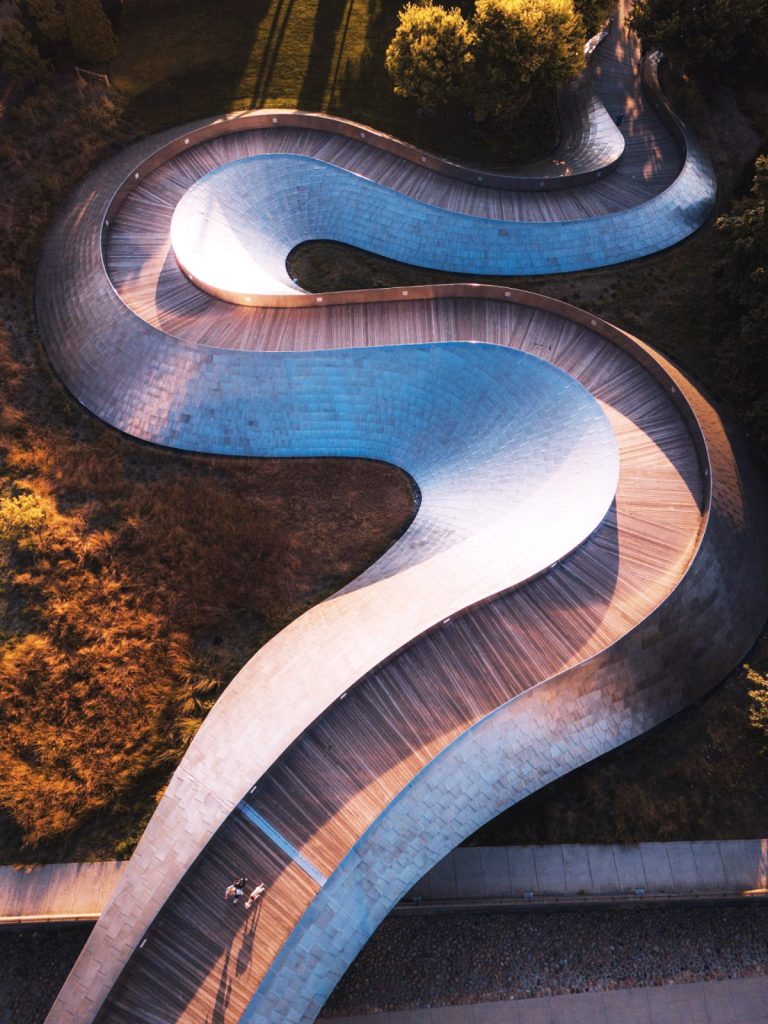
When I visited Millennium Park, standing before the Pavilion was just as awe-inspiring as seeing The Bean. It represents Chicago’s commitment to blending public art, architecture, and community gathering spaces. Even if you’re not attending a concert, walking through and admiring Gehry’s design is a must-do in the city.

Things to Do in Chicago
Beyond the highlights I experienced, Chicago offers countless things to see and do. Here are some recommendations if you’re planning your own trip:
- Architecture River Cruise – See the city from the water while learning about the history and design of its skyline.
- Millennium Park – Home to The Bean, outdoor concerts, and art installations.
- Art Institute of Chicago – One of the world’s top art museums, featuring works by Monet, Van Gogh, and Grant Wood’s American Gothic.
- 360 Chicago Observation Deck (John Hancock Building) – For panoramic city views, including Lake Michigan’s endless horizon.
- Lincoln Park Zoo – A free, historic zoo that’s perfect for a relaxed afternoon.
- Chicago Theatre – Catch a show or just admire the iconic marquee on State Street.
- Navy Pier – A family-friendly spot with rides, shops, and views of Lake Michigan.

No matter your interests—sports, art, food, or history—Chicago has something to keep you engaged day after day.
Final Thoughts
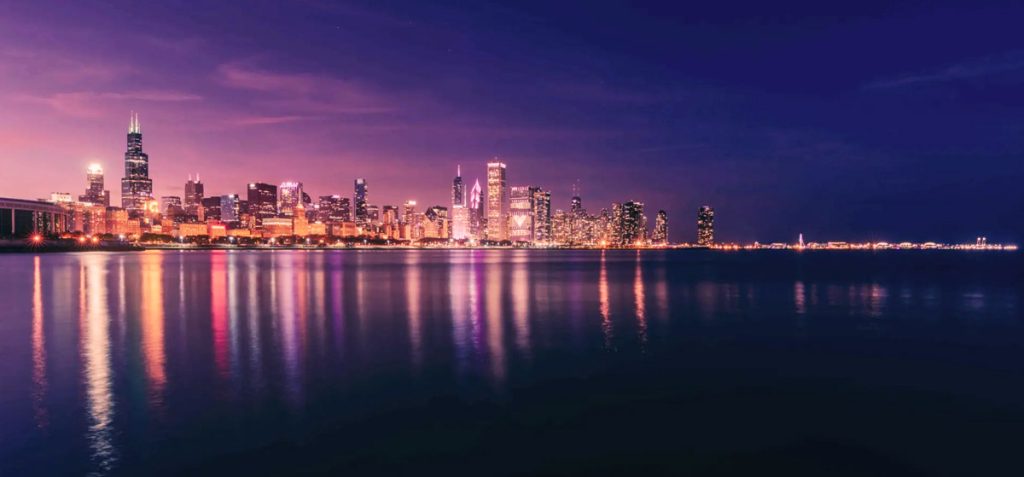
Chicago is a city of contrasts—historic yet modern, bold yet inviting. From wandering the Riverwalk and marveling at its architecture, to learning about dinosaurs and ancient civilizations at the Field Museum, cheering at Wrigley Field, indulging in hearty meals, exploring endless attractions, and finally standing before The Bean, the city offered me experiences I’ll never forget.
If you’re looking for a destination that combines culture, history, architecture, sports, and food in one unforgettable package, Chicago should be at the top of your list.

